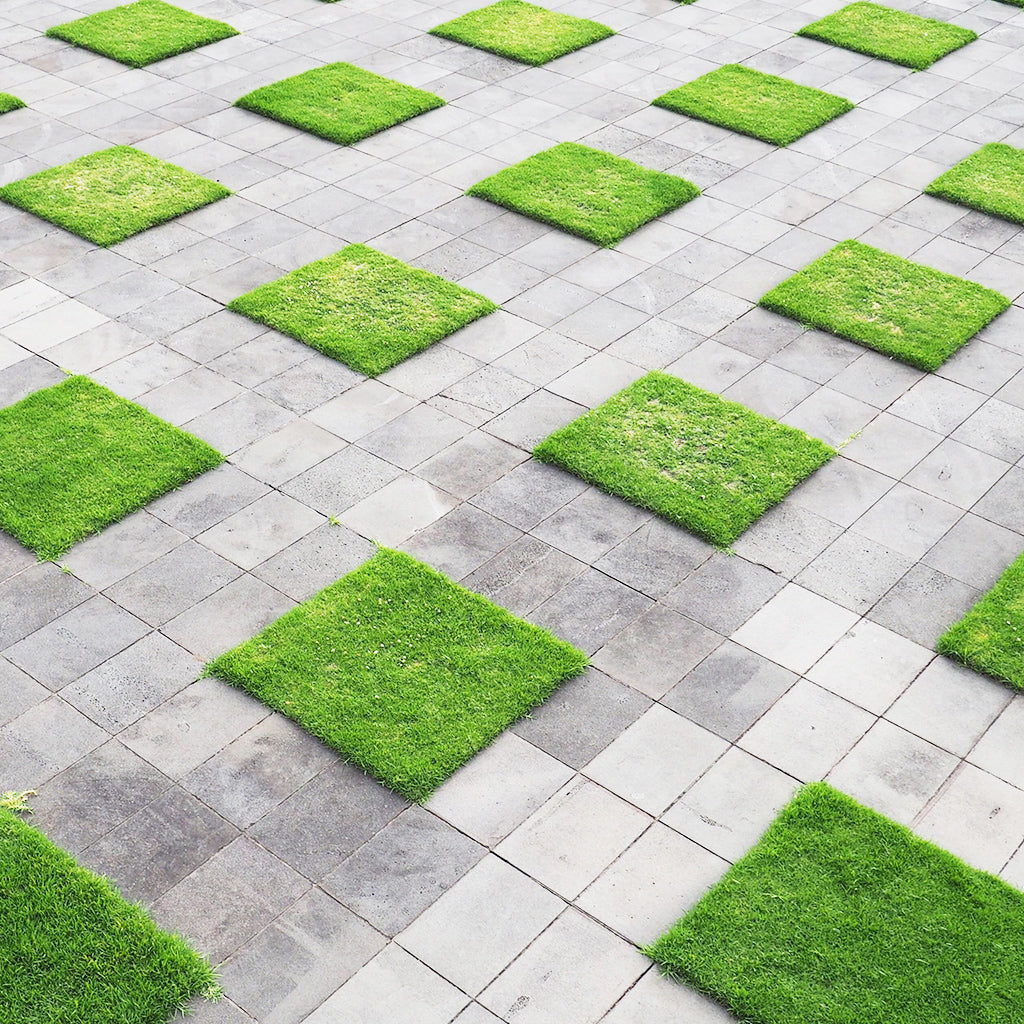0115 684 8754

How to lay artificial grass on concrete

Artificial grass can turn any garden, whatever the shape or size, into your very own low-maintenance sanctuary. But you don’t have to limit yourself to replacing areas of existing lawn, in fact it can be even easier to install artificial grass on old concrete, block paving and patio paving slabs. It is truly a great way to brighten up a tired looking garden.
We’ve got answers to your most frequently asked questions about artificial grass on concrete, as well as a brief guide on how to lay it.

Is artificial grass on concrete a good idea?
Artificial grass is always a good idea - and on concrete it could be even better! It is already low-maintenance but with a solid concrete foundation, installing artificial grass onto concrete can actually save you time and money in comparison to replacing an existing lawn. This is because the secret to long-lasting artificial grass is a solid sub-base, so if your concrete area is in good condition, you are already ahead of the game.
Not only that, but there is a big safety benefit of having artificial grass over concrete. During the winter months concrete can become very slippery and therefore dangerous. Whereas artificial grass creates a non-slip surface whilst still being as low maintenance as concrete.

Will the artificial grass on concrete feel hard underfoot?
Artificial grass on concrete will feel harder than traditional lawns which are laid over granite dust. However, you can create a softer lawn through carefully selecting the perfect artificial grass for your garden. A grass with a longer pile height and higher stitch count will recreate some of the feeling of a real lawn.
Another way to make the area softer is to install a foam shock pad between the concrete and grass. A foam underlay can provide extra comfort and also reduce the impact of any falls. That is why if you have children, or a play area where falling over might be a frequent occurrence, you should install an underlay of at least 20mm. There are a lot of shock pad products available on the market, so if you feel overwhelmed, contact us and we’ll be happy to advise you.

Is artificial grass on concrete good for dogs?
Artificial grass on concrete is completely fine if you have pets as long as you make sure of two things: that you have plenty of drainage and have a non-absorbent foam underlay.
If you opt for a foam underlay you should steer clear of recycled foam. This is because this type of underlay isn’t very permeable - and whilst water does eventually get through it and drain away it also acts as a sponge which can expand and damage your grass, as well as holding onto nasty smells like pet urine. It is also important that you have plenty of drainage through the base to carry away pet waste.

How to maximise artificial grass drainage on concrete
The amount of drainage from your artificial grass will depend on the concrete surface. If the concrete has a gradual fall then water will naturally fall with the gradient. If it doesn’t, you could find that water will sit between grass and concrete, causing it to take longer to evaporate or drain. You can test out how effective your drainage is by hosing the area down and checking to see if water sits anywhere.
If drainage is a concern for you, you can use a 16mm concrete core drill bit to drill holes and fill with 10mm shingle. However this method is dependent on how well the ground drains below the concrete so might not always be the right solution for you. If you’re unsure how to best deal with drainage for your project we would advise contacting us so we can put you in touch with one of our experts.

How to lay artificial grass on uneven concrete
In some instances you may be able to level the concrete in areas that have dipped by using a fine aggregate such as granite dust. Infill dips with the granite dust, and compact using a hired whacker or roller. An alternative method would be to use a self-levelling compound. These are usually straightforward to use, as the majority of them only require water.
If there are large cracks or distorted sections then we advise you to remove all of the existing concrete and follow the installation procedure for a typical artificial grass installation. This is because, in these instances, there is no guarantee that the concrete won’t continue to distort after you install artificial grass on it.

How do you lay artificial grass on concrete?
If your concrete is in good condition, or you were able to even it out, then you can focus on laying your artificial grass:
- Gather the tools you need
- Ensure you have the right measurements
- Clean the concrete: Remove any weeds or moss, hose the area down and give it a brush. Allow it to dry
- Drill drainage holes (if required)
- Install artificial grass foam underlay (if required) - roll out foam and cut to desired shape. Join all the pieces together with masking tape
- Quickly spread glue across the concrete at 2-3mm thick. If water will be draining off your concrete or paving, rather than through drainage holes, leave gaps in your glue to allow water to escape
- Fix the underlay to the glued concrete
- Cut grass to size
- Secure grass onto concrete
How will I secure my artificial grass to the concrete?
To fix the grass onto concrete you need to use the same adhesive we supply for joining artificial grass together. Either using a zig zag pattern or a double bead pattern apply the adhesive around the perimeter of the artificial grass.
Before laying down the grass ensure that you are happy with the cutting and that there are no ripples or bumps in the artificial grass. Once glued there will be no opportunity to amend.



